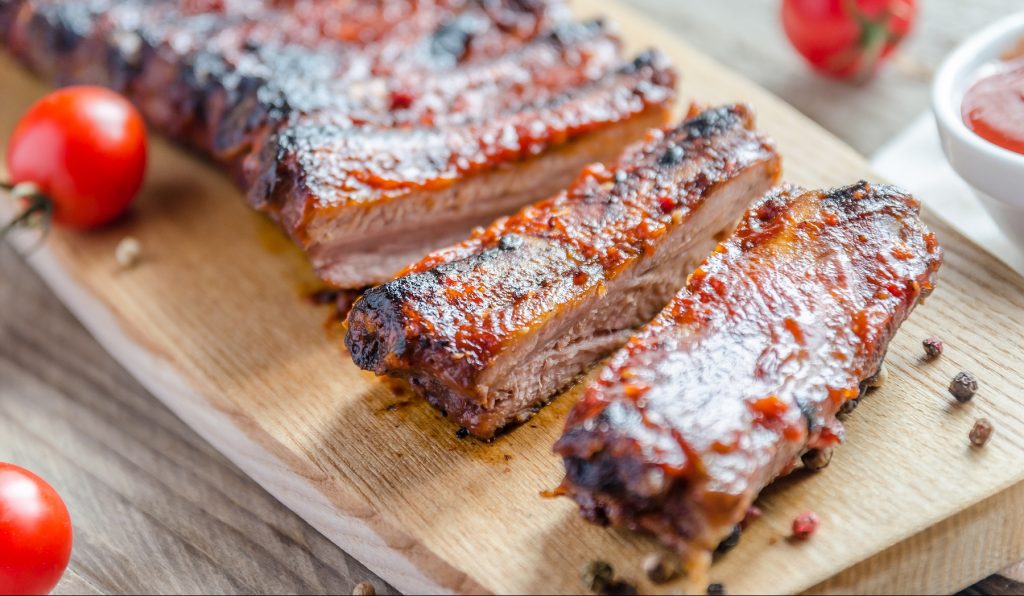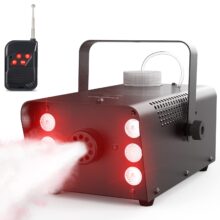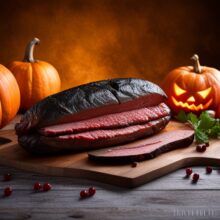Tips For Smoking Meat

The first step in smoking meat is ensuring that the meat has sufficient smoke and heat. The heat and smoke in the smoker will be lost if the lid is opened for any reason, so it’s important to keep a close eye on the temperature. Using a meat thermometer to monitor the temperature is also helpful.
Salting
Salting meat before smoking is an important step for a successful smoking process. This step will prevent the meat from turning rancid by inhibiting the growth of spoilage bacteria. It will also add an appealing smoke flavor. Smoking meat can be done with several techniques, including cold smoking, hot smoking, or smoke roasting.
Salting meat prior to smoking can also enhance its flavor and make it more tender. Olive oil, garlic, lemon, and orange juice are excellent natural marinades. Another good choice for marinating is alcohol. This ingredient has a mild flavor and is a natural tenderizer. Stout or whiskey work best with beef and pork, while lighter alcohols can complement poultry and seafood. Wine can also be used as a marinade for most types of meat, including chicken and fish.
Salting meat prior to smoking can be a simple process or a more complex one. Before salting, the meat should be cleaned and rinsed. This step will remove any dirt or small particles from the meat. Then, the meat should be placed into a large salt container. A brine will keep the meat from drying out during the smoking process. Once it’s ready, you can proceed with the smoking process.
Salting is an ancient method of food preservation and has been used for centuries. It is also used to make meat tender by promoting deep center penetration and a juicier cut. But, the best way to salt your meat is to follow a reliable recipe. It’s essential to use the right amount of salt or the meat will spoil prematurely or harbor dangerous organisms. You can also add additional herbs or spices to the salting process.
The process of curing meat can take some time. Aside from removing moisture, it also promotes growth of beneficial bacteria. These bacteria will also add flavour. When the process is finished, the meat is safe to eat.
Using a meat thermometer
To use a meat thermometer properly when smoking meat, you need to put it in the thickest part of the meat. You also want to place it in the center so that it won’t touch any bones or fat. The lowest internal temperature is best for determining when the meat is ready for consumption. The probe should be inserted at least half an inch into the meat, and you can insert it deeper if needed.
Most meat smokers come with a dial thermometer on the dome, which is a cheap way to measure the temperature, but it will likely be inaccurate. The reason for this is that the air space above the meat will affect the meat’s temperature, and the cooker plate itself will emit heat. Because of these factors, the thermometer on the smoker will pick up all of the heat, and it will give you an inaccurate reading.
A meat thermometer can also be calibrated. You can check the temperature with ice-cold water to make sure that it’s accurate. The temperature should be between 32 degrees Fahrenheit and 0 degrees Celsius. If your thermometer is inaccurate, follow the manufacturer’s guidelines to calibrate it.
Smoker thermometers are available in different varieties. There are Bluetooth and RF thermometers. Bluetooth thermometers, for example, have limited ranges. Using a thermometer is a great way to make sure that your meat is ready to serve. It can also give you an accurate temperature when smoked.
Instant-read thermometers are another good choice. These thermometers are available at hardware and kitchen supply stores. Their accuracy is impressive and they’re easy to use. However, they’re not oven-safe and you need to insert them carefully into the meat. You can also use a meat thermometer to check the temperature of chicken breasts, which are delicate and must be cooked to perfection.
Keeping an eye on the temperature
Keeping an eye on the temperature while smoking is crucial for safe, tender smoked meat. Smoking requires a slow cooking process, and the temperature must remain constant throughout. However, it can be difficult to control the temperature, particularly when you are flipping the meat or opening the smoker. Fortunately, there are a few simple methods to check the internal temperature of your meat without having to check the smoker.
If you’re not comfortable using a digital thermometer, you can use a meat thermometer that has a built-in probe. This type of thermometer will keep the meat cold while smoking and will not let it become overcooked. The temperature of your meat should be between 70 and 100 degrees Celsius.
You can also use a hand-held thermometer. This will give you a more accurate reading than a digital dial thermometer. A good professional-grade thermometer will be able to give you an accurate reading in about two to three seconds. Another option is a wired single-probe thermometer, which connects to a display unit outside the smoker. It’s important to test your thermometer’s accuracy and make sure it matches the temperature inside your smoker.
Using a smoker
Using a smoker to smoke meat is an art form that requires patience and experimentation. Many people follow the “10,000-hour rule” of cooking. However, the results will be well worth the effort. The right kind of wood will produce the best flavors and tenderness. Using a smoker is a great way to improve the flavor and tenderness of your meats.
A smoker should have a water pan to keep meat moist and tacky. This will ensure that the smoke adheres more effectively to the meat. It’s also a good idea to add some liquid flavoring to the water pan. Water also prevents the meat from drying out. A disposable aluminum pan can be used.
The temperature of a smoker must be monitored carefully to make sure that meat is cooked evenly. Some smokers cook meat at low temperatures to infuse it with flavor. Other smokers use higher heats to smoke foods. Smokers are best for smoking large cuts of meat. They can also be used to smoke poultry, hot dogs, sausages, and other foods. They are easy to use and available in electric and propane models. The electric model is faster to heat up and easier to control.
The temperature of your smoker will vary depending on the type of meat and the size. Smokers are designed for cooking “low and slow,” and meat should be smoked at a temperature between 250 and 300 degrees Fahrenheit for six to twelve hours. For example, a whole chicken would need to be smoked for approximately 45 minutes per pound.
Before smoking meat, you should apply a dry rub. A dry rub will not penetrate the meat but will stay on the surface. A dry rub can be applied up to an hour before smoking and can be covered for 24 hours. To prevent the meat from drying out and overcooking, you should use a spray bottle that has an adjustable nozzle. You can adjust the spray setting from a mist to a stream. Too forceful a spray will cause the bark to break.
Preparing the meat
If you’re new to smoking meat, you may be wondering what kind of cut will work best. The best way to choose a cut is to consider the fat content and thickness. A leaner cut will be less likely to dry out and will cook more evenly. You can also add wood chips to enhance the flavor.
Trimming the meat’s fat is an essential part of the smoking process. It will help the meat cook more evenly and faster. Having a decent fat cap will also prevent the meat from drying out. It’s also important to allow the meat to rest on the smoker until it is cooked through. Smoking the meat longer will result in more flavor.
Smoking meat requires a steady hand and patience. Brined meat should be put into an electric smoker at least ten hours before eating. After brining, you can place the rack in the smoker or put it on the coals. After smoking for an appropriate amount of time, remove the rack and enjoy your smoked meat.
Using a thermometer to monitor the temperature is an important step. Over-smoked meat will taste rubbery and hard to chew. To avoid this, moisten the meat before carving it. Apple juice or water will also work well. If you’re not sure of how to use a thermometer, you can consult a professional.
Read more great BBQ articles at Bob's BBQ Tips
Did you miss our previous article…
https://notoriousbob.net/?p=1788



